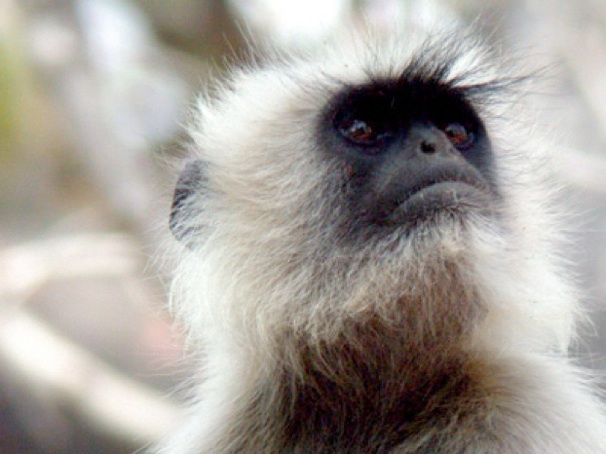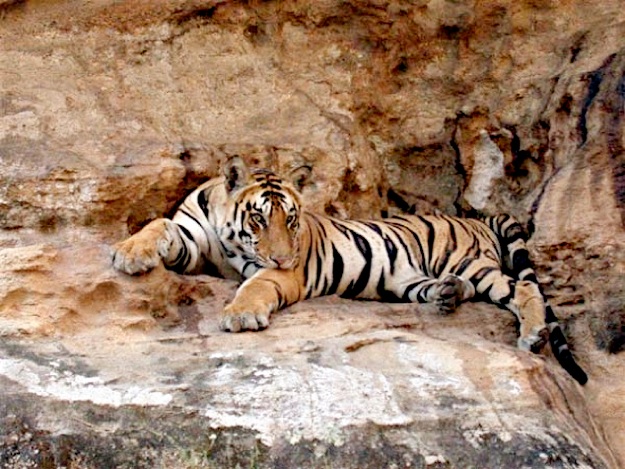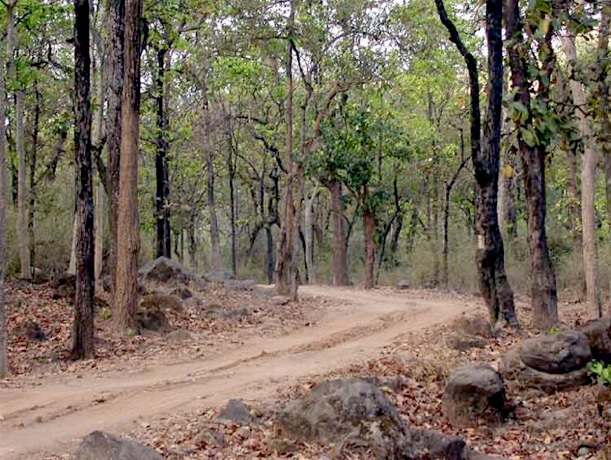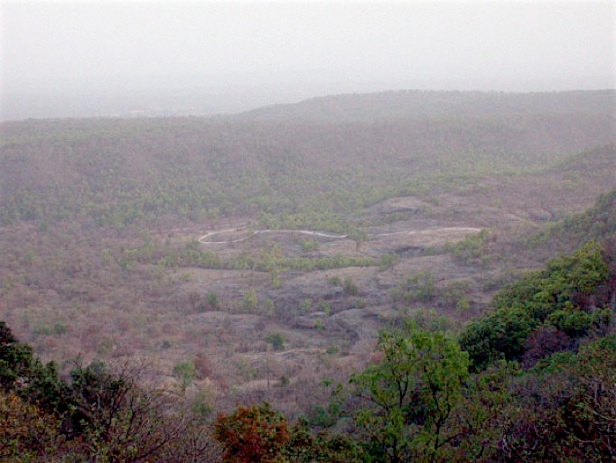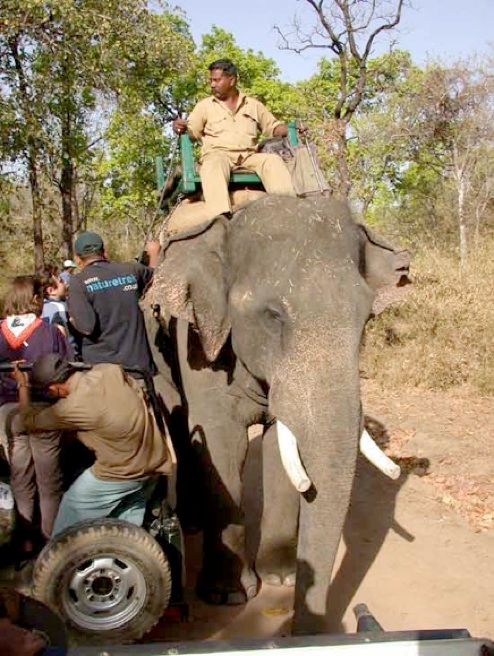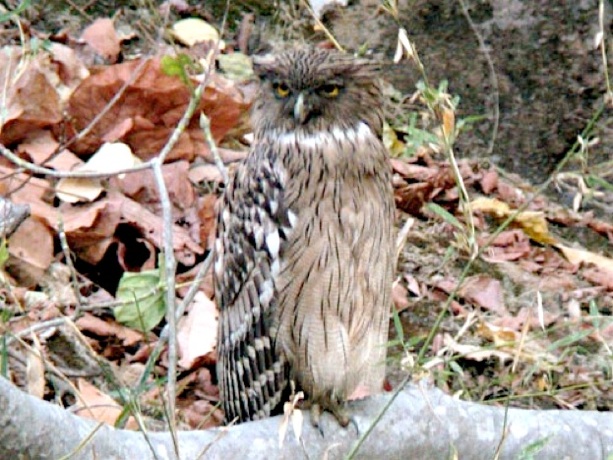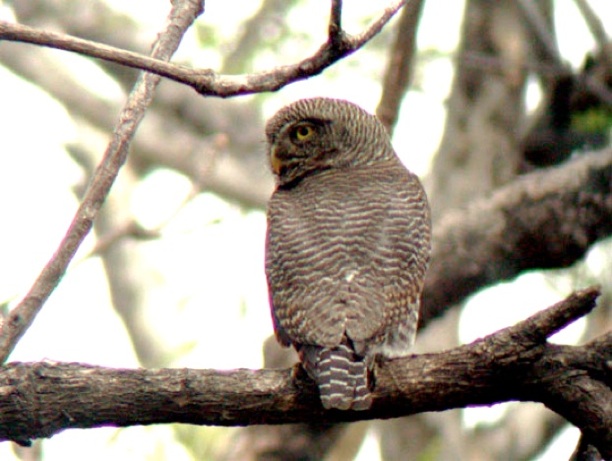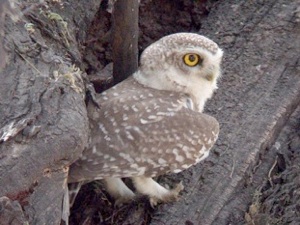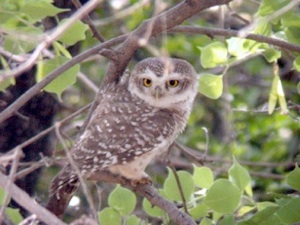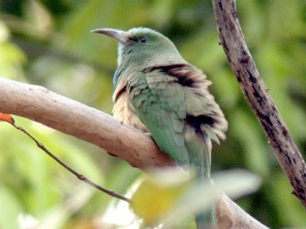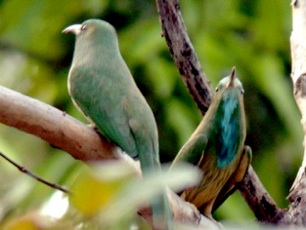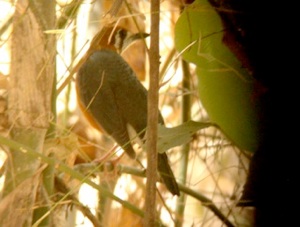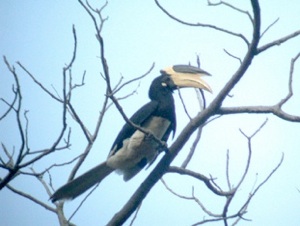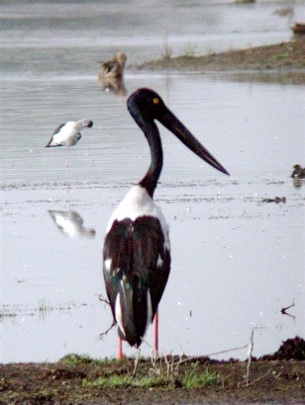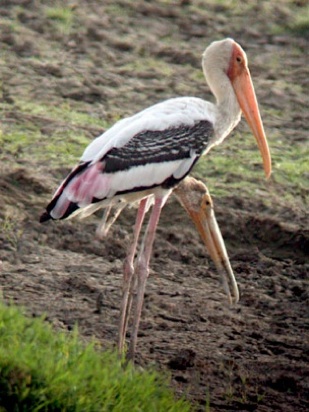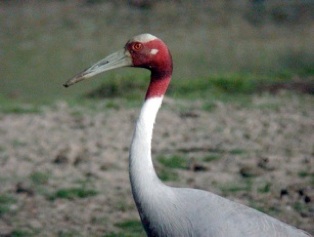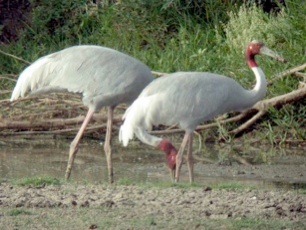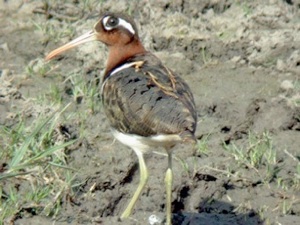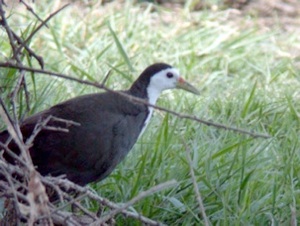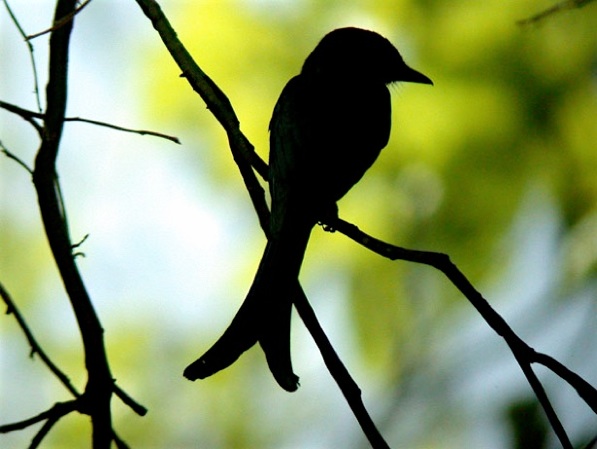A VISIT TO INDIA
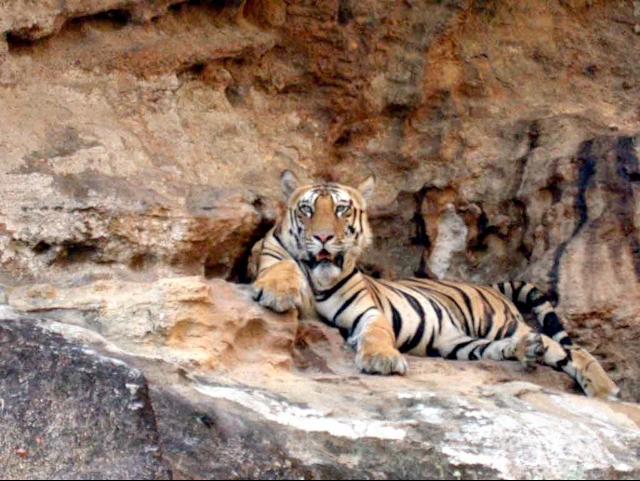
It had always been an ambition of mine to see a wild Tiger and during 2004 an opportunity presented itself and I made the trip to India.
I went with Naturetrek , mainly due to the fact that the holiday focused on Tigers, Birds and Photography. This was to be the most adventurous holiday I had ever undertaken. Tigers cannot be guaranteed but 15 or so game drives, I would be very unlucky not to see one. The holiday was just about all inclusive and I was well looked after throughout the visit. The local guides were excellent and very knowledgeable. I spent 8 days in Bandhavgarh, i day in Agra and 4 days in Bharatpur. The only down-side was the amount of travelling, especially on the Indian Railway. An experience all on its own. Accommodation was very good at Bandhavgarh in Jungle Lodge type units, with Air Con. In Bharatpur I stayed in a luxurious Maharaja’s Palace, dwon-side here was the rooms were without Air Con. The food was excellent throughout. Included in the trip was a visit to the Taj Mahal at Agra, well worth the visit, as the building is truly remarkable.
Grey Langur Monkey – Bandhavgarh, India – April 2004
Bandhavgarh is one of the best place sin India to view Tiger,not due to any unusual density but due to the relatively open nature of the deciduous Sal Forest and to the fact that the resident Tigers have become habituated to the presence of the park’s elephants. The Sal Forest which predominates in the park is replaced by mixed forests at higher elevations. At lower levels there are large areas of grassland and bamboo. The core of the reserve is hilly and dominated by an ancient natural fort which towers to an impressive 800 metres above the forest. The areas designated to the “Game Drives” are networked by dirt tracks which meander throughout the forest and grassland areas. The whole reserve is alive with birds, deer and Grey Langur Monkey. The forest animals are regularly seen and the “Yelping” of the Chital Deer and the “Barking Calls” of the Langur betray the presence of any roaming Tiger. With silence and patience, I was rewarded with some unforgettable views, as the “King” of the forest sauntered into view, scarcely paying attention to the camera lenses that were being pointed at it. The Tigers gave breathtaking views on several occasions and then slowly disappeared into either grassy undergrowth or Sal Forest, leaving one wondering in amazement.
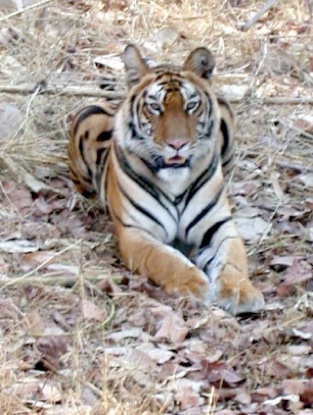

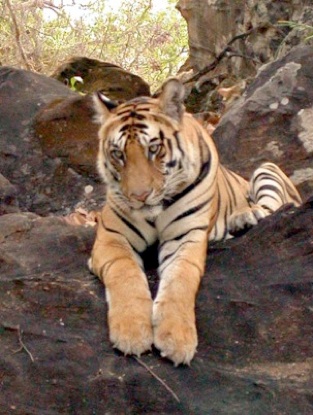
 Tigers – Bandhavgarh – April 2004
Tigers – Bandhavgarh – April 2004
These photos show from left to right – female from the back of an elephant – Above right – same female – Left – female cub and above right my very first Tiger – digi-scoped at long range – the same adult female. The picture below if of the male cub.
Bandhavgarh Reserve – Typical Tiger country
Bandhavgarh – Typical dirt track through the Sal Forest
Bandhavgarh – View from the Hill Fort
Bandhavgarh – Getting ready for the Jungle Trek
During my stay at Bandhavgarh, I saw four individual Tigers and had eleven sightings. The pregnant female in the area, along with her three previous cubs (1 male & 2 female) which were almost fully grown. I also saw mongoose, many Chital & Samba Deer, 1 Nilgai Antelope (A Blue Bull), numerous Wild Boar, I Indian Fox, many Grey Langur & Rhesus Monkey and numerous Three-striped Palm squirrel. We also saw Sloth Beer tracks but unfortunately not the animal that made them. We also missed a Leopard by seconds. Although Tigers were the star attraction, I had some tremendous Birding experiences throughout the park. I saw around 210 species, many of which were new to me.
My highlights were probably the Owls with Mottled Wood Owl being one of the rarest birds we saw. Also Brown Fish Owl, Jungle Owlet and Spotted Owlet. Other goodies were Changeable Hawk-Eagle, Crested Serpent Eagle, Malabar Pied Hornbill, Greater Rackettailed Drongo, Asian Paradise Flycatcher, Black-naped Monarch, Brown-headed Barbet, Coppersmith Barbet, Black-rumped Flameback, Red Jungle Fowl, Common Hawk-Cuckoo (or Brain Fever Bird due to its monotonous call), White-breasted Kingfisher, Blue-bearded Beeater (another rarity) Purple Sunbird and Orange-headed Thrush.
Brown Fish Owl – Ketupa zeylonensis – Bandhavgarh – April 2004
Jungle Owlet – Glaucidium radiatum – Bandhavgarh, – April 2004
Spotted Owlet – Athene brama – Bharatpur – April 2004
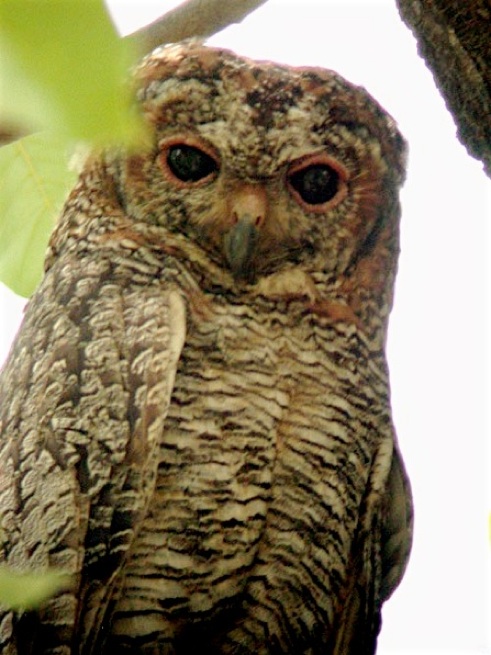
Mottled Wood Owl – Strix ocellata – Bandhavgarh – April 2004 – One of the rareist birds of the trip.
Blue – Bearded Beeater – Nyclornis athertoni – Bandhavgarh – April 2004
Orange-headed Thrush – Zoothera cirina Malabar Pied Hornbill – Arthracocerios coronatus
I left Bandhavgarh on Friday 19th April for Agra & Bharatpur. It was to be yet another long train journey. My time in Agra was very brief as we arrived late. The visit to the Taj was rather rushed but nevertheless worth while. A stunning building and very picturesque. I arrived at Bharatpur on the late afternoon of the 18th April after a diabolical mini-bus journey. It seems that travel by any means in India is a nightmare. I had just enough daylight to taste Bharatpur. Very soon after my arrival at the Palace, I was quickly transported by Rickshaw, through the Keoladeo Nature Reserve of Bharatpur. Heading down the “Main Drag”, I could view the huge marshland area and there seemed to be birds everywhere. February is the best time, yet it still seemed to me to be amazing. Herons, Egrets, Storks
and Spoonbills everywhere and huge numbers of waders. On the way back to the Hotel I managed to see three of the rare Dusky Eagle Owl, including a juvenile bird. This was a real bonus species and a great way to start my birding in Bharatpur.
Sunday 11th April through to Tuesday 13th April, the format was birding in the mornings and late afternoons in the reserve area. However I wanted to see Indian Skimmer and so my guide kindly organised a trip away from Bharatpur to a place called Bunda Baretha. A huge dam area of water about 40 kms from Bharatpur. A fantastic area for birding despite a two hour drive to cover just 40kms! – On arrival we soon found Indian Skimmer along with Small Pratincole, lots of waders, Sarus Crane, Asian Open-bill Stork, River Tern, Cotton Pygmy Goose, Streak-throated Swallow, Red Avadavat and Brown Rock Chat. Probably the most spectacular bird was an albino White-breasted Kingfisher. The day past all too quickly.
Black-necked Stork – Ephippiorhynchus asiaticus Painted Stork – Mycteria leucocephala

Above a pair of Black-necked Stork at Bharatpur, the female clearly shows a yellow iris and the male a brown iris. There were only 4 birds present including this pair.
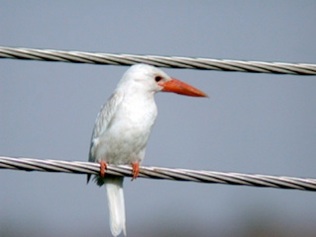
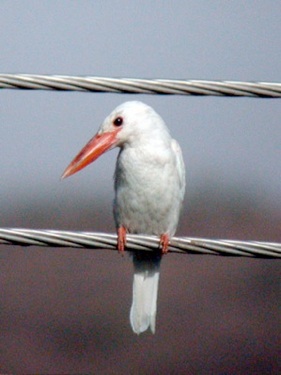
White-breasted Kingfisher -Bunda Bhareta – An albino bird both very spectacular and very rare in the wild.
Sarus Crane – Grus antigone – Bharatpur – April 2004
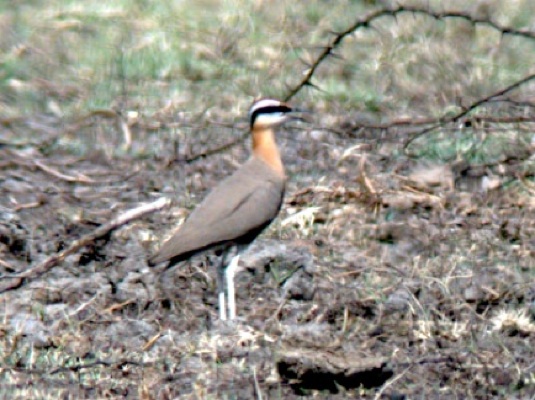
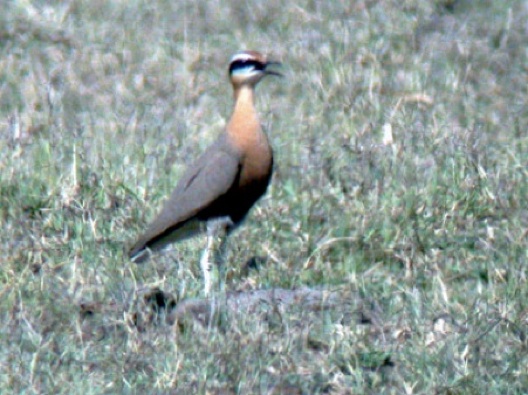
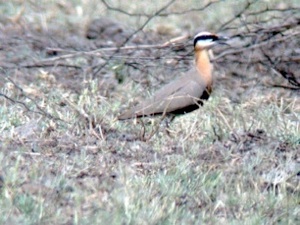
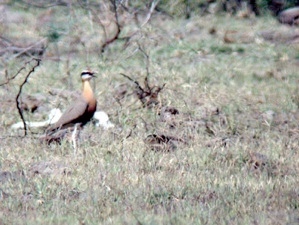
Indian Courser Cursorius coromandelicus – Bharatpur – April 2004
On the breeding ground close to the nest that we found. These images were digi-scoped some distance away from the bird and the nest area.
My final day in Bharatpur turned out to be very memorable. We walked for what seemed to be miles, across the southern part of the reserve. A very dry and arid area looking for Indian Courser. After what seemed like an eternity, we found the bird and a bonus, the nest & eggs. An extremely rare sight and only the second confirmed breeding record of the species at Bharatpur. Other good birds during the day were Brown-headed Gull, Blackshouldered Kite, Steppe Eagle, Greater Spotted Eagle, Pheasant-tailed Jacana, Painted Snipe, Collard Scops Owl, Grey Francolin, White-tailed Stonechat, Lots of Storks, Egrets & Herons, lots of Citrine Wagtail and many ducks & waders.
Bharatpur must rank as one of the best birding areas in the world. It is only 29 sq kms but holds a diversity of habitats. A place I will never forget and a fitting end to my journey to the Land of the Tiger.
Painted Snipe – Bharatpur – April 2004 White-faced Waterhen – Bharatpur – April 2004
Black Drongo – Dicrurus macrocerus
For me one of the most memorable birds of the trip, common and seen most days in Bharatpur. I quote an exert from a book I read whilst at Bandhavgarh – “ When Kipling chose Seoni in Central India as the setting for the wolf-boy Mowgli, he knew exactly what he was doing. India is surely the Land of the Tiger, long may it continue to be so. As the sun slides over the western horizon, the long gold-edged shadows melt into the soft darkening dusk. From a tall stand of Sal, the wild laughter of the Mottled Wood Owl rings out and the Black Drongo is in silhouette against the leaf canopy – Distant Memories.


